#Yukio Futatsugi
Text




Panzer Dragoon Saga
49 notes
·
View notes
Text
Phantom Dust (2004)

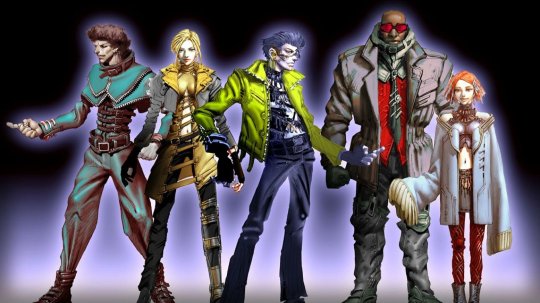
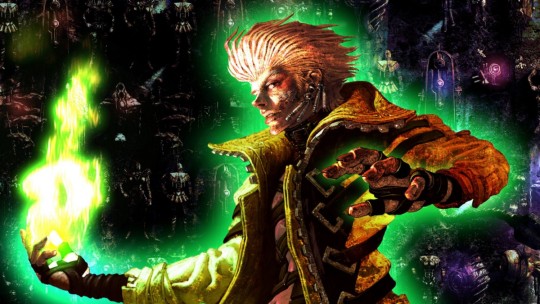

26 notes
·
View notes
Text



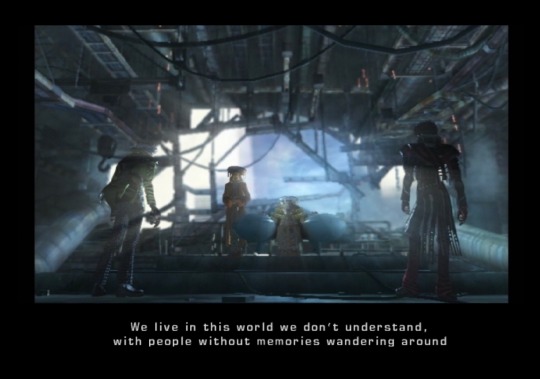
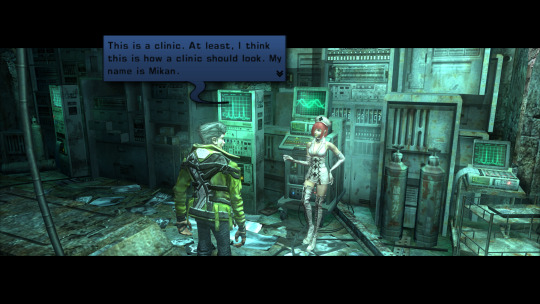
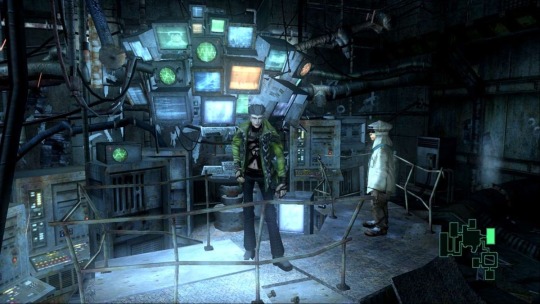
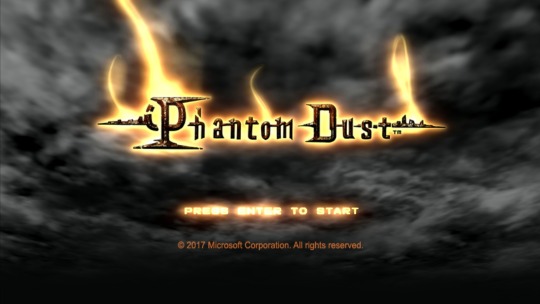
Phantom Dust(ファントムダスト, Fantomu Dasuto)[2004]
#cyber#cybercore#old web#video games#early 00s#xbox#00s aesthetic#00s gaming#year: 2004#video game photography#phantom dust#yukio futatsugi#xbox live
15 notes
·
View notes
Text

Panzer Dragoon Saga
Panzer Dragoon Saga, known in Japan as Azel: Panzer Dragoon RPG, is a 1998 role-playing video game (RPG) developed by Team Andromeda and published by Sega for the Sega Saturn. The third entry in the Panzer Dragoon series, it replaced the rail shooter gameplay of the previous games with RPG elements such as random encounters, semi-turn-based battles and free-roaming exploration. The player controls Edge, a young mercenary who rides a dragon and encounters a mysterious girl from a vanished civilization.
Sega felt an RPG was critical to compete against the PlayStation and Final Fantasy. Development began in early 1995 alongside Panzer Dragoon II Zwei, (released in 1996). The project was arduous and repeatedly delayed; incorporating the Panzer Dragoon shooting elements with full 3D computer graphics and voice acting, both unusual features in RPGs at the time, pushed the Saturn to its technical limits and strained team relations. Two staff members died during development, which the director, Yukio Futatsugi, attributed to stressful working conditions.
Panzer Dragoon Saga is one of the most acclaimed Saturn games and is often listed among the greatest video games, earning praise for its story, graphics, and combat. As Sega had shifted focus to its Dreamcast console, Saga had a limited release in the West, and worldwide sales were poor. The Andromeda artist Katsumi Yokota attributed the low sales to the creative spirit of the team, who were not interested in creating a mainstream product. Although it became a cult classic, Panzer Dragoon Saga has never been rereleased, and English copies sell for hundreds of US dollars. After its release, Sega disbanded Team Andromeda; several staff members joined Sega's Smilebit studio and developed a fourth Panzer Dragoon game, Panzer Dragoon Orta (2002), for the Xbox.
read more..
#education#educate yourselves#wikipedia#today news#article#today i learned#learning#gaming#video games#panzer dragoon
3 notes
·
View notes
Text
This game looks so sick. Can't believe I've never heard of it!
1 note
·
View note
Photo





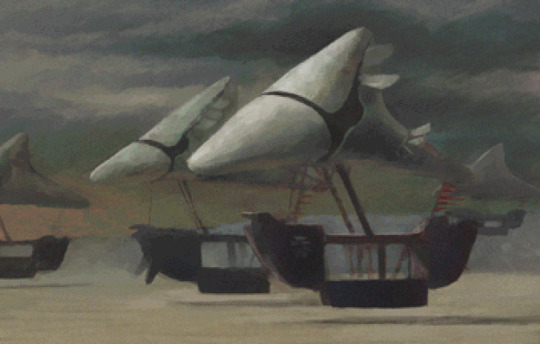



panzer dragoon ii zwei (1996 saturn, dir. katsuhiko yamada, team andromeda/sega)
from ending sequence by katsumi yokota
#panzer dragoon ii zwei#panzer dragoon zwei#panzer dragoon ii#panzer dragoon 2#panzer dragoon#yukio futatsugi#katsuhiko yamada#katsumi yokota
270 notes
·
View notes
Text
I can see why people loved Phantom Dust. I’m only starting out and already the gameplay is great fun. It appears to be one of those games which are easy to grasp and difficult to master.
I’m so happy that I finally get to play this! For free on Xbox too! 8D
4 notes
·
View notes
Photo

Phantom Dust
Yukio Futatsugi has had a really strange career. He’s shown extremely impressive creativity, but he’s tended to stick around major gaming corps instead of going on his own. When he did help found a new company called Grounding Inc, they stuck to more humble download only titles instead of anything ambitious or costly. Panzer Dragon will remain his greatest accomplishment the way things are looking, but there are a few who would argue otherwise. If you want some full on Futatsugi, some real uncontrolled gaming strangeness, you need to look at the one game he directed for Microsoft before leaving to start Grounding. What you will find is truly unlike anything else out there unless you’re willing to dig in the deep mines of obscure PC indie gaming – and this got a full on remaster! This is Phantom Dust, a game that defies any clear genre, though the initial concept was something like a trading card game like Magic The Gathering meets the one-on-one action battle game Virtual-On.
Read more...
#hardcore gaming 101#jonathan kaharl#review#phantom dust#action-rpg#3d action#cyberpunk#dark scifi#destructible environment#fantasy-sf mashup#xbox#xbox one#player: amnesiac#post-apocalypse#windows#Microsoft Game Studios#video games
4 notes
·
View notes
Text
@admiral-craymen replied to your post “@admiral-craymen replied to your post “Azel was a drone created by the Ancients. She is the central character of the conclusion...”
Panzer Dragoon Saga director Yukio Futatsugi has stated that when he creates a game he doesn’t want the story to be focused a fictional avatar of the player. For this reason, Panzer Dragoon Saga’s story is centred on Azel, with you, the main character, watching her story develop. It is Azel’s story that advances the plot; you watch her story unfold by accompanying her.
This makes sense. I have trouble with a story where, though we are interacting with a character, we don't feel like we're really, actually interacting with them. (I don't know anything about film/screenwriting, but I imagine "You're really, actually interacting with this character" is something different.)
For games, the "finding-their-actual-personhood" issue is perhaps more difficult, but not impossible. My problem is when a story allows an element of this feeling to remain, even if it would really break the illusion. I say this after having read, and found kind of interesting, the afterword to The Northern Caves by Jon Stewart, which you may have heard of.
So, for instance, one of the things that I disliked about Portal was the way the puzzles were presented as challenges to overcome, so that "impressing" them on the player was not really a challenge. "Do I know that skill in the time limit?" wasn't really a real challenge; instead, the player was treated as a sort of engine, and all the goalposts along the way were sorts of thrown around to further push the engine in that direction.
What I would really like in a puzzle game is some way to make the player feel like their failures are actually made visible. If they are in fact not going to be able to do something, it shouldn't matter that they knew it or thought they knew it, because the player (and not their subconscious) is the arbiter of "I can do that." I find this kind of thing hard to describe, but this seems like a sort of distilled version of what I'm thinking of.
So in "Sestrea," Azel is an example of this – she's presented as a living robot, which is crucial for plot purposes – but, most important, she's presented as having consciousness. This means that she has goals, has feelings, is capable of pain and suffering, and can feel shame and the things that go with it. I don't know of any games that take this kind of thing on without turning it into an endurance challenge, and I wonder why not?
1 note
·
View note
Text
The Good Life Kickstarter inches towards Switch stretch goal on final day
The Good Life Kickstarter inches towards Switch stretch goal on final day @Grounding_Inc @Swery65 #IndieDev #GameDev #IndieGame #Games
Deadly Premonition creator’s The Good Life has hit its funding goal on Kickstarter. With mere hours left, it now hurtles towards its Switch stretch goal.
If you backed Swery’s next title on Kickstarter, it looks like you will indeed be living The Good Life in the future. After a failed crowdfunding attempt on Fig, the game has succeeded in its Kickstarter campaign. With the assistance of Japanese…
View On WordPress
#G-rounding#Independent Development#Indie Games#Indies#Swery#The Good Life#Unties#white owls#Yukio Futatsugi
0 notes
Audio
My interview by RadioSEGA about my project of a rebooted open world Panzer Dragoon, check it out and join us on Twitter, Facebook, Instagram, sign the petition and spread the word !
#panzer dragoon#panzer dragoon saga#azel panzer dragoon rpg#panzer dragoon zwei#yukio futatsugi#sega saturn
0 notes
Photo

Just got Home and I hear Co Dircetor Takashi Iwade who work with Yukio Futatsugi on the First Two Panzer Dragoon Games and Artist for Panzer Dragoon Orta pass away Recently :(. He also did other Work for sega and Smliebit like Jet Set Radio and work a little bit on the Yakuza Series (Mainly 0 and the Fist of the North star Crossover game) Lets Hope Forever Entertainment got to Contacting this Guy before his Death for lintel on the Recent Panzer Dragoon Remake.
Here is the Article Explaining more: https://www.gamasutra.com/view/news/349007/Obituary_Panzer_Dragoon_artist_and_designer_Takashi_Iwade_has_passed_away.php?utm_source=feedburner&utm_medium=feed&utm_campaign=Feed%3A+GamasutraNews+%28Gamasutra+News%29
#Panzer Dragoon#Panzer Dragoon II Zwei#Panzer Dragoon Orta#Jet Set Radio#Yakuza 0#Jet Set Raido#Takashi Iwade#Sega#Team Andromeda#Smilebit#Co-Director#Sega Developer#Passing Death
1 note
·
View note
Photo

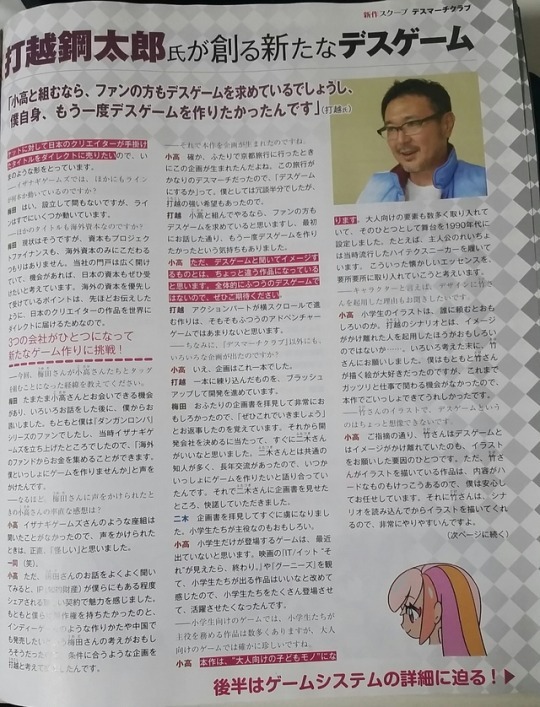
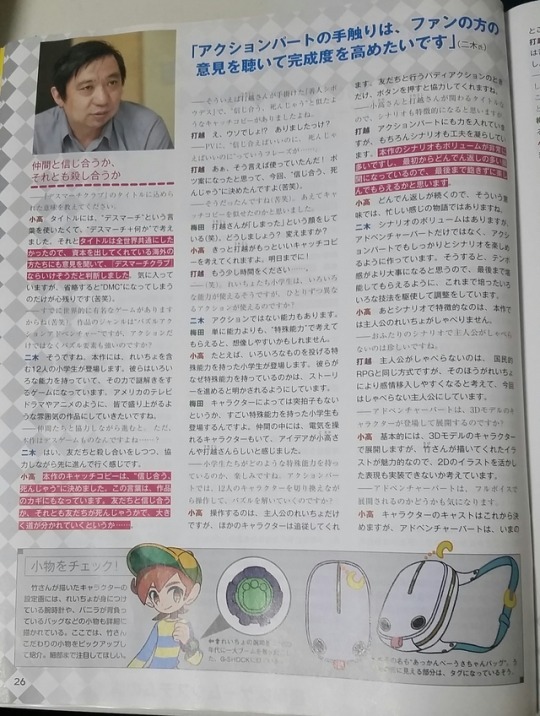

Death March Club Famitsu Interview [2018.10.04]
If you enjoy my translations and other content, please consider donating to my ko-fi!
Now if you’ll excuse me, I’m off to send TooKyo Games my resume.
Page 3
Title: A New Death Game Created by Kodaka Kazutaka and Uchikoshi Koutarou
TooKyo Games is a new development studio formed by seven industry veterans who have been responsible for several well-known adventure games. With their new project, Death March Club, they're getting some help from Izanagi Games as the publisher and Grounding as the developer. We wonder what this union will bring forth. Along with Kodaka and Uchikoshi, we also have Umeda Shunsuke from Izanagi Games and Futatsugi Yukio from Grounding to tell us about the status of the new game and what sets it apart.
This is the Final Death Game by Kodaka and Uchikoshi?!
Death March Club may be published by Izanagi Games, but it's being developed by TooKyo and Grounding, making it your maiden project. First, please tell us about the circumstances and what everyone is doing with regards to Death March Club. Mr. Kodaka, if you could go first, please.
Kodaka: I'm the creative director, which means I take responsibility for handling all of the creative portions.
Were you the one who came up with the original plan for this idea?
Kodaka: Uchikoshi and I were talking and came up with the idea of a killing game about elementary school kids. Since I was stepping away from Dangan Ronpa at that point, I thought that I'd had enough of death games, but Uchikoshi said he wanted to give it one more try.
Uchikoshi wanted to come back to form after Zero Escape Zero Time Dilemma, in other words.
Uchikoshi: Pretty much. I convinced Kodaka after a lot of pleading, going “No matter what, I want you to let me do this.”
Kodaka: That said though, he promised in exchange that after this, the death game thing would be over. This is the final nail in the coffin. This is the last death game either of us will create.
That's a bit of a shocking thing to say, but it seems as though you're really committed to putting your all into developing this game. Next, what are you in charge of, Mr. Uchikoshi?
Uchikoshi: I'm the director and scenario writer.
When you say “director”, does that mean you're also in charge of the design and whatnot?
Uchikoshi: I'm leaving most of the action parts to Mr. Futatsugi and his team at Grounding. I advise them on what kinds of content I want to have included, and pretty much my input ends there, in making requests.
Futatsugi: It's true. We're handling all of the programming and graphic design, basically everything aside from the story. I'm the development producer, which means that I'm in charge of managing all of that.
Uchikoshi: Mr. Futatsugi and his team are extremely easy to work with. I'd be lost without them.
Kodaka: It's because Grounding has quite a lot of experience. Besides, we can't do programming or make CG art ourselves. I'm continually impressed by people who can take something and turn it into a reality.
Futatsugi: Thank you very much. However, we would not be able to write captivating stories like yourself or Mr. Uchikoshi. The scenario for this game is truly interesting. While on one hand, I'm so happy to be able to work with both of you, on the other, I feel a bit unlucky that I won't be able to play the game after it goes on sale without already knowing where the story will go. (pained smile)
Umeda: Our only choice is to erase your memory of the game after we finish it. (laughs)
That certainly is a concern of a developer. (laughs) Please, tell us what your role is, Mr. Umeda.
Umeda: I'm the producer. I'm in charge of calculating the budget and tweaking things to keep communication going smoothly. I leave the world-building, setting, and story to TooKyo Games, and the action parts to Grouding. My most important mission comes in after the game is finished. Things will shift toward promotion and advertising, which of course will happen in Japan, but also in full-force abroad. We're already collecting data about foreign media.
That's amazing! The foreign media is also keeping an eye on what Mr. Kodaka and his team are doing. Umeda-san, you're the head of Izanagi Games. What kind of company is it?
Umeda: Izanagi Games is a company I started myself. We offer capital from overseas funds, which we also use to finalize projects. Japanese creators and developers using capital from overseas may seem unusual, but we don't intend to just compete in the domestic market. We want to sell Japanese creators' work directly to both the domestic and overseas markets, so that is why we have the current set-up we do.
Quote: “We want to sell Japanese creators' work directly to both the domestic and overseas markets.” (Umeda)
Page 4
Quote: “Joining up with Kodaka means that the fans are probably looking forward to a death game, so I wanted to try making one just one more time.” (Uchikoshi)
It seems as though Izanagi Games has quite a few irons in the fire.
Umeda: Yes, even though we've only just formed, we have several irons in the fire.
Will other titles also be using foreign capital?
Umeda: Yes, however I don't mean to imply that the funds and project finalization are exclusively coming from foreign capital. Our doors are wide open, so of course we'd like to have some Japanese investors as well if the opportunity arises. The reason for the foreign funding is, as I mentioned, the idea of wanting to introduce the world at large to Japanese creators' work.
Three Companies Come Together to Face the Odds and Create One New Game!
Please tell us what led to Mr. Umeda teaming with Mr. Kodaka and the rest of the team.
Umeda: I happened to run into Mr. Kodaka and after we had talked for a bit, I was the one who made the offer to work together. I was already a fan of Dangan Ronpa, and since Izanagi Games had just formed, I said, “I can get some funds from abroad. Would you like to make a game together?”
I see. How did you feel when Mr. Umeda made that offer, Mr. Kodaka?
Kodaka: I had never heard of a system like the one Izanagi Games uses, so honestly, my first thought was “something's fishy about this.”
All: (laugh)
Kodaka: However, after hearing out what Mr. Umeda had to say about us also holding rights to the IP, I found the idea of the unusual contract appealing. Since I wanted the freedom to create games as indie creators do and Mr. Umeda's ideas about expanding the market to China were interesting, I suggested to Uchikoshi that we come up with an idea to fit the parameters.
And that's how this project was born.
Kodaka: If I remember correctly, we came up with the idea during a trip to Kyoto. Since the trip itself was such a death march, the suggestion of a death game came up. I was half joking when I said it, but Uchikoshi had a strong desire to actually go through with it.
Uchikoshi: Joining up with Kodaka means that the fans are probably looking forward to a death game, so as I said at the beginning, I felt like I wanted to try making a death game just one more time.
Kodaka: That said, I think that this game will be a little different from what you might think when you hear the words “death game”. Everything about it is different from a usual death game, so please look forward to what's to come.
Uchikoshi: Adventure games usually don't have sidescrolling portions.
By the way, you showed off more projects than just Death March Club.
Kodaka: Yes, this is just one of them.
Uchikoshi: We're focusing on this one first as a way to brush up before we go on with the others.
Umeda: Since what I've seen from you so far has been extremely intriguing, I remember thinking “Oh, please start with this one!” When it came to choosing the company to help develop it, I immediately thought of Futatsugi. We have a lot of mutual acquaintances and a long history together, and we've often said we wanted to work on a game together. Then, when I showed the project proposal to him, he agreed.
Futatsugi: As soon as I saw the proposal, I was instantly hooked. The idea of having elementary school students as the main characters was also very interesting.
Kodaka: I don't think there's been many games lately with casts entirely comprised of elementary schoolers. (Jess's Note: JUNIOR HIGH STUDENTS! USE THEM, YOU COWARDS!) When I watched It (“When You See It, It's All Over” in Japan) and The Goonies, I thought about how great those were, and I wanted to make a game where elementary school students were the main cast.
There's plenty of media aimed at elementary school kids that also star them, but not many aimed at adults.
Kodaka: This is a kids' story for adults. There's plenty of content aimed at adults included, which is why the game is set in the 1990s. For example, the protagonist Reicho wears hi-tech sneakers. I wanted to include things that evoked this kind of nostalgic essence.
(Jess's Note: Oh thank god. I got a little worried there about the “aimed at adults” thing for a sec.)
Speaking of characters, I'm interested in how you decided on Mr. Take to do the designs.
Kodaka: It was pretty interesting trying to find someone to do illustrations of elementary school students. We thought it'd be funnier if we appointed someone whose style was at odds with Uchikoshi's scenario... After a lot of thought, we asked Mr. Take. I'm a long time fan of his work, but until now we hadn't had a chance to work together, so I'm very happy to have him on board.
I'm having a tough time picturing a death game that uses Mr. Take's art.
Kodaka: That's exactly what we're going for. The fact that his art style is so mismatched with a death game is one of the reasons we chose him. However, he has plenty of harder pieces in his oeuvre as well, so I feel I can safely trust him with this. Besides, since Mr. Take started drawing after reading the scenario, he's very easy to work with.
Next we'll be finding out about the game system!
Page 5
Quote: “For the feel of the action parts, I wanted to use fan feedback to offer better integrity.” (Futatsugi)
Will You Trust Your Comrades? Or Kill Them?
Please tell us the meaning behind the title Death March Club.
Kodaka: We wanted to use the term “death march” for the title, and we figured it would work best as “Death March + something”. In the end we decided that since we wanted the title to be the same across the entire world, and we wanted the title to have meaning to those foreign people who were investing in us, Death March Club was the best bet. I like the title, but I can't forget that it will likely be abbreviated to DMC. (pained smile)
Since there's already a world-famous game [Devil May Cry] that uses that abbreviation, huh. (pained smile) The game genre is puzzle action adventure, but the puzzles can hold their own up against the action sequences, correct?
Futatsugi: Indeed. There are twelve elementary school student characters, including Reicho. They each have their own abilities, so the game uses puzzles or riddles that can be solved using those powers. Like in American TV shows or cartoons, we want to make something that everyone can get excited about.
So you progress by cooperating with your friends. But this is a death game, correct...?
Futatsugi: Yes. You progress forward while cooperating with and killing your comrades.
Kodaka: We decided that the tagline should be “Will You Trust Your Comrades? Or Kill Them?” This phrase is the key to the game. Whether you trust your friends or whether they die is a pretty huge fork in the road.
Speaking of, that's very similar to the tagline for Virtue's Last Reward, isn't it? “Trust or Die”
Uchikoshi: What, no way?! Was that what it was?
In the trailer, the phrase “You can trust others, or you can let them die” got thrown around...
Uchikoshi: Ah, now that you mention it, we did use that! I thought that idea got shot down, so this time I chose “trust or die”. (pained smile)
Oh, is that so. (pained smile) I thought the tagline was based on the the one for VLR.
Umeda: Mr. Uchikoshi's hanging his head with an “oh shit” expression. (laughs) What should we do? Should we change it?
Kodaka: I'm sure Uchikoshi could come up with a tagline even better. By tomorrow, even!
Uchikoshi: Can I have a little more time than that...?
(laughs) I hear that Reicho and the other kids can use special abilities, so will they all be used differently in the action sections?
Futatsugi: There are abilities that aren't action-based.
Umeda: They're less abilities and more “special skills”, so if you think of them that way, it's probably easier to imagine.
Kodaka: For example, there's one kid who has the ability to throw things. As for why they have these skills, well, you'll have to play the game to find out.
(Jess's Note: Is anyone else getting the vibe that these are just DR-style talents?)
Umeda: Depending on the character, some have what might be considered to be superpowers. In the group there's a character who can control electricity, which seems very appropriate coming from Mr. Kodaka and Mr. Uchikoshi.
I'm looking forward to seeing what abilities the students have. During the action parts, do you switch between all twelve characters to solve puzzles and progress?
Kodaka: The only one you can control is Reicho, the protagonist, but the other characters follow behind you. When you want to do a Buddy Action with your friend, you press a button to have them help out.
Since both Mr. Kodaka and Mr. Uchikoshi are involved, I imagine that the story will be quite unique as well.
Uchikoshi: Though I've had some input on the action parts, the story is really where I'm most confident. Since there are so many scenarios and the story is so robust, with lots of twists and turns even from the beginning, I hope you can play to the end without getting sick of it.
Kodaka: Since the twists keep on coming, you could say it's a very busy story.
Futatsugi: There's certainly a lot of heft to the scenario, but not just in the adventure sections. We included plenty of story into the action parts as well. Since if you're enjoying story while also playing the action parts, tempo becomes very important, so we employed tons of various techniques so that you can get your fill by the time you finish.
Kodaka: Another quirk of the story is that the protagonist, Reicho, can't talk.
It's odd to see the two of you create a silent protagonist.
Uchikoshi: Silent protagonists are a staple of JRPGs, and we wanted the player to be able to pour their own emotions into him, so we went with a protagonist who can't talk.
Will we be seeing the 3D models in the adventure portions as well?
Kodaka: For the most part everything will use 3D models, but because Mr. Take's art is so charming, I thought we could include it in the marketing and the packaging.
I get the feeling that the adventure part will be fully voiced.
Kodaka: We've still got to choose the voice cast, but we're planning to have it be fully voiced, yes.
Gear: Check!
Take-san has included detailed personal belongings in his illustrations of the characters, such as Reicho's watch and Vanilla's bag. Here are Take-san's comments about them. Please pay attention to the details!
Reicho's watch. Doesn't it look like the G-Shock watches that were a huge hit in the 90s?
The name of this one is “Taunting Rabbit Bag” (Akkanbei Usa-chan Bag). Apparently the rabbit's tongue is also the zipper tab.
Page 6
Uchikoshi: Because of how long the game is, it might be hard to do all the recording, but I think having full voice acting would be more fun.
I look forward to see how Reicho and the others are performed. So the there's a lot of story in this game, but what do you estimate the play time will be?
Umeda: As of right now, I think it would take about 20 hours to clear.
Kodaka: Since there will be completionist bits like item gathering and replay value [from speedrunning, getting high scores, etc.], and the action parts will take some trial and error, I think it will take a bit longer to clear the entire game. Because of that, we don't plan to raise the difficulty. The base may be 2D action, with everything balanced so that even people who aren't good at games can finish it.
Are the puzzles also balanced so that anyone can complete them?
Kodaka: Yes, they are. For the people who tend to get stuck, maybe other characters can offer hints, or there can be special help options packed in.
Aiming to Complete a Project as an Indie Game Would
I know the game is coming to PC, but do you still think it will sell out?
Umeda: Yes, it will.
Kodaka: I think just releasing it on PC is really interesting and very true to the indie experience.
I find it pretty rare for a game aimed at Japanese fans to only get a PC release. Obviously the two of you plan to release it on Steam, but do you have a home console release planned?
Umeda: Since the main target is the overseas market, for now we're aiming just to release on PC.
I see. The release date in 2020 is quite a ways away, so is there any reason why you decided to announce the game now?
Futatsugi: This might seem like a strange time to announce a release that was coming to home console, but it's common for indie games to be announced well in advance. Creating something together while listening to the fans who are cheering you on is one merit of the indie process, so that's why we decided to announce it now.
Umeda: The timing also had a lot to do with us receiving the funds from overseas. The idea is to get the foreign media and audiences excited for the release. Perhaps even some of the announcements themselves prior to release may be surprising.
I'd also like to ask how you plan to release information on the game going forward.
Kodaka: We're getting illustrations coming in from Mr. Take at a steady rate, so I think we'll be able to introduce characters as we go. If we get the opportunity, we've also thought about live announcements as well.
So like an indie developer, you plan to release information, listen to fan opinions, and change the story and game to suit them?
Umeda: It depends on the situation, but I think this game may have a few of those instances. We're thinking of methods to share information with, of course, the Japanese fans, but also overseas fans as well. (Jess's Note: Uh, I have a resume to send, hold on.)
Futatsugi: At the very least, we can quickly get out a playable demo so that you can get a feel for the gameplay. I'd love to hear the feedback.
Since Mr. Kodaka and Mr. Uchikoshi have fans all over the world, I think that there will be a big response.
Uchikoshi: Since I want the die-hard fans to enjoy themselves, I've included the essence of Kodaka, so I hope the Dangan Ronpa fans are looking forward to it as well.
Kodaka: That's true. I think that Uchikoshi's fans will enjoy the new game as well. When I saw the scenario that Uchikoshi had written, there were lots of points that caught my attention that I wanted to talk about.
Uchikoshi: Kodaka was also the one who suggested setting it in the 90s. He's really good at capturing the kind of essence that draws people in.
Umeda: Mr. Kodaka's eye and sense of style, combined with Mr. Uchikoshi's world-view has made this a very interesting project.
Kodaka: I definitely agree that this is an extremely interesting game, but don't you think it's a little early for us to be talking like it's debuting?
Uchikoshi: How should we release info from now on... As usual, this is something we can't say anything about for fear of spoilers.
Kodaka: Were you just going to give away the whole story?!
Uchikoshi: No, I can't do that!
Kodaka: Then don't say such stingy things.
Quote: “Trust or Die is the tagline, and those words are an important key to the story.” (Kodaka)
Take-san's Rough Designs!
In addition to their gear, take a look at the important rough sketches for Reicho and Vanilla! See their full-faced smiles, them playing with bugs, and enjoy this new side of them you wouldn't see without the roughs.
Reicho's rough designs
“Reicho sketch”
Vanilla's rough design
“Vanilla sketch”
“Snail!”
“horns!”
Thanks for reading! Here’s another ko-fi plug!
50 notes
·
View notes
Photo

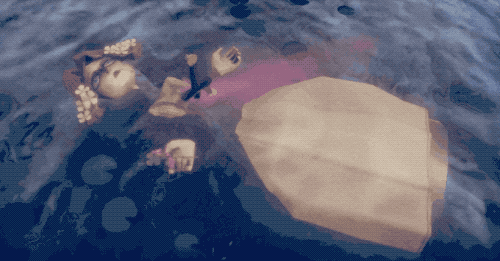


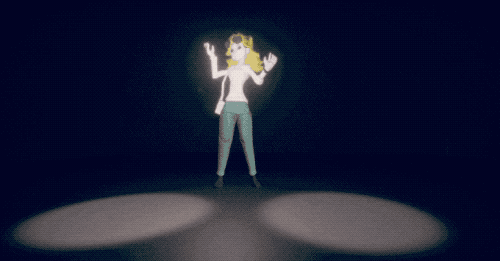
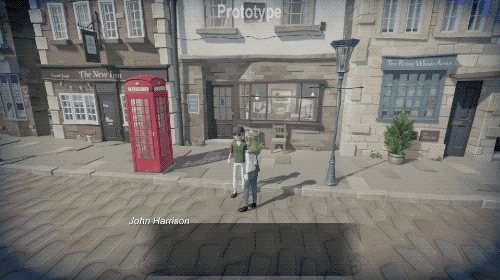

The Good Life is a surreal small town adventure currently in development by SWERY (Deadly Premonition) and Yukio Futatsugi (Panzer Dragoon), in which you take on the role of a reporter who moves to a quaint British town where people turn into cats and dogs once a month!
Read More & Play The Prototype, Free (Windows)
638 notes
·
View notes
Link
Folks, PLEASE throw money at Swery, this game is basically going to be Animal Crossing except in England and with human villagers (except at night) and you can sell photos and shear sheep and blow all your money on camera equipment or clothes or booze and there are murders. It’s gonna be great.
33 notes
·
View notes
